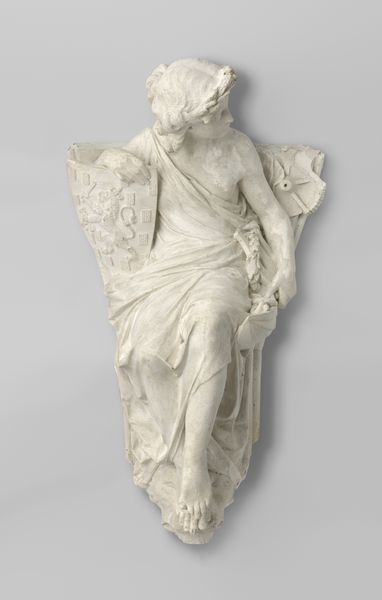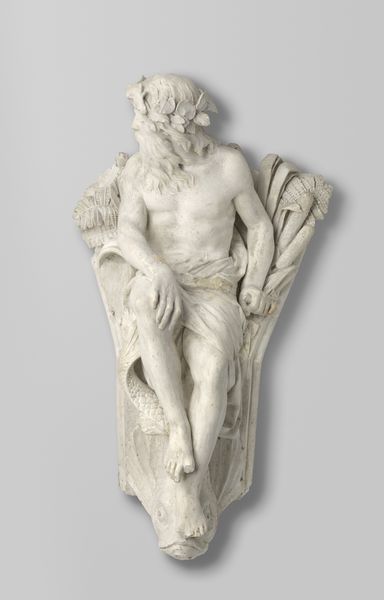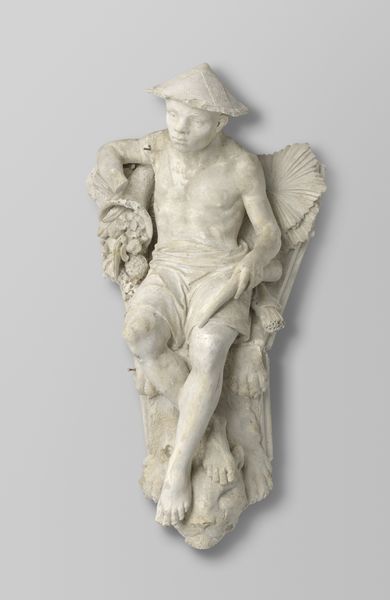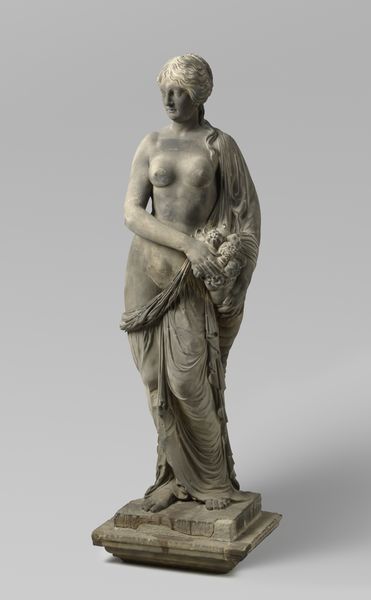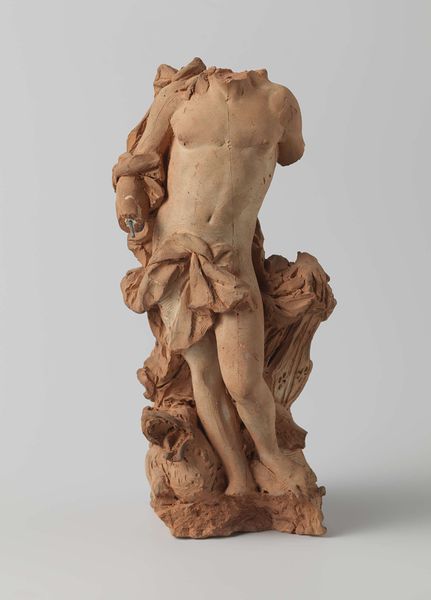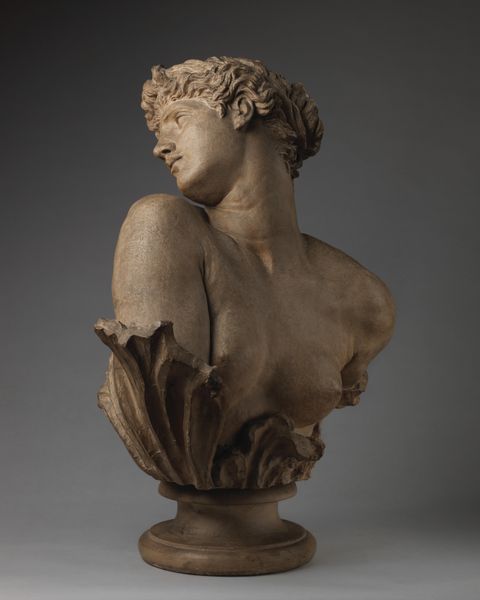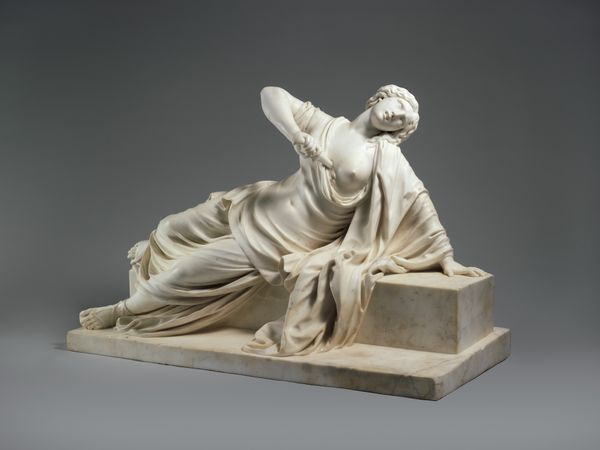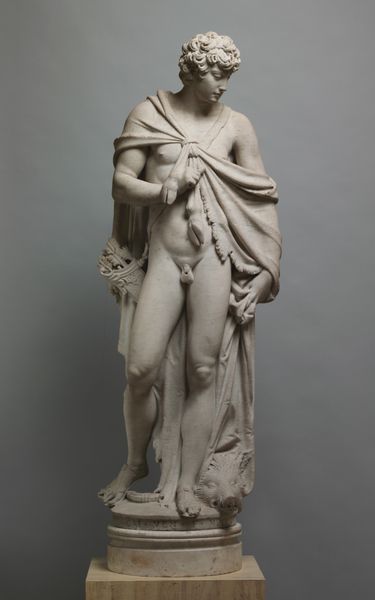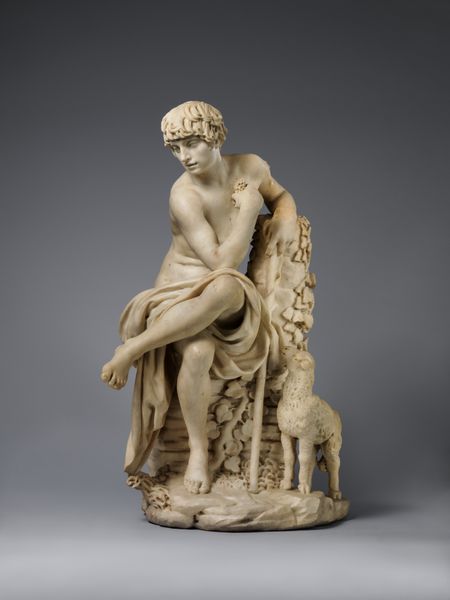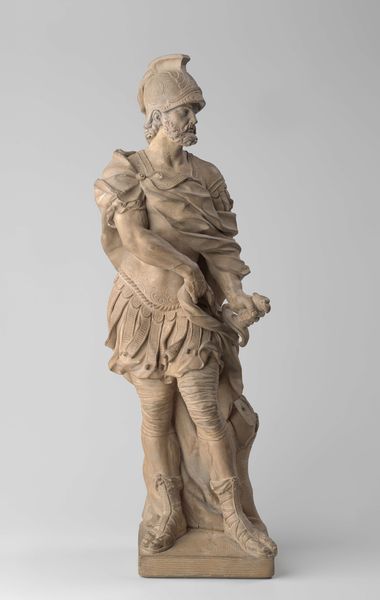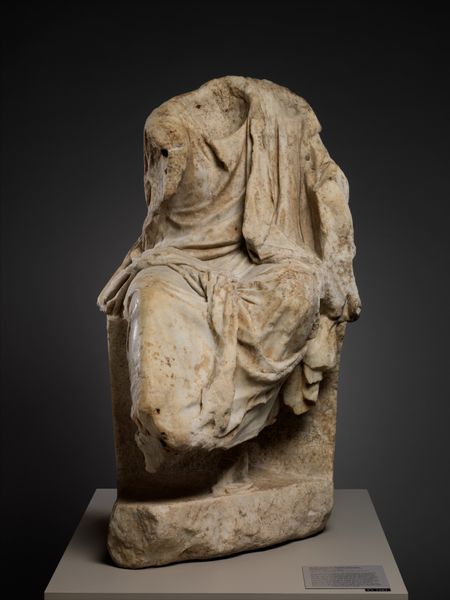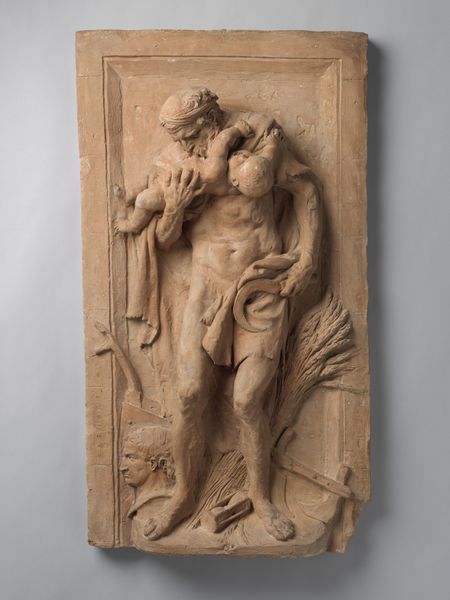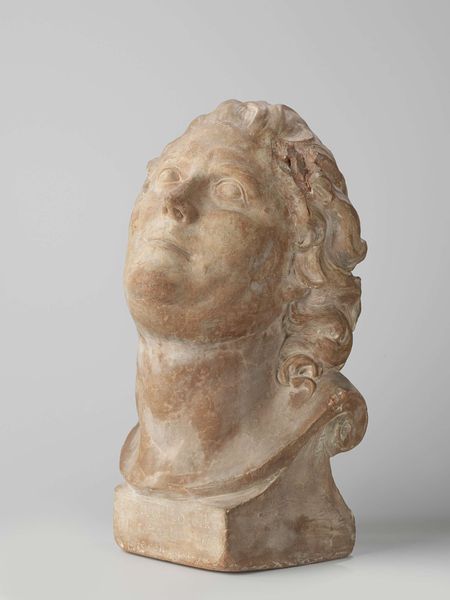
relief, sculpture, marble
#
portrait
#
sculpture
#
relief
#
figuration
#
classicism
#
sculpture
#
history-painting
#
academic-art
#
marble
Dimensions: height 60 cm, width 35 cm, depth 25 cm, weight 7.2 kg
Copyright: Rijks Museum: Open Domain
Curator: Welcome. Before us is a marble relief titled "Fragment van de Oranjeboom," crafted in 1874 by Frans Stracké. Editor: My immediate impression is one of restrained power. Despite its fragmentary state and classical rendering, there's an undeniable weight, both literal and figurative, emanating from this piece. The turn of the figure and the fall of drapery suggest dynamism frozen in stone. Curator: Precisely. Stracké, deeply rooted in academic art, employs a classical figuration. We observe the smooth, idealized forms characteristic of classicism, heightened by the cool tonality inherent to the marble. The composition itself is remarkably stable, with the figure occupying a central triangular space, further contributing to a sense of balance. Editor: I find the symbolic weight of the 'Oranjeboom', or Orange Tree, fascinating. Given the Netherlands' historical relationship with the House of Orange-Nassau, is it not a visual metaphor for national identity and royal authority, even in this broken form? Curator: Indeed, your suggestion aligns perfectly with an iconographic interpretation. The work originally formed a section of the dismantled 'Oranjeboom' monument dedicated to Willem II which stood outside the KMA or Dutch Military Academy. A monument rife with allusions to Dutch national pride. The fact that the tree it once embellished is no longer present is a formal disruption; the break amplifies the message. Editor: I also observe the figure's gaze, directed downwards and away, suggesting humility but also perhaps introspection? Given the context of the Academy, might this symbolize the burdens or responsibilities tied to leadership and service? Curator: Quite astute. In isolating this particular fragment from its original, monumental context, the remaining form invites viewers to ponder those complexities of leadership, duty, and the weight of history. And, through the classical style of representation, Stracké draws direct connection with values of honor and moral courage from antiquity. Editor: So the lasting impact, then, is a reminder of how classical forms can be repurposed to carry not just idealized beauty, but complicated stories and enduring symbols. Thank you, a truly fascinating piece! Curator: My pleasure, your ability to decode cultural context enriches one's appreciation for formal language and classical aesthetics.
Comments
No comments
Be the first to comment and join the conversation on the ultimate creative platform.
